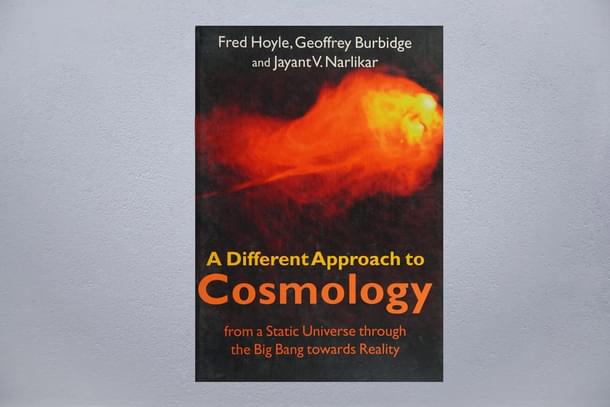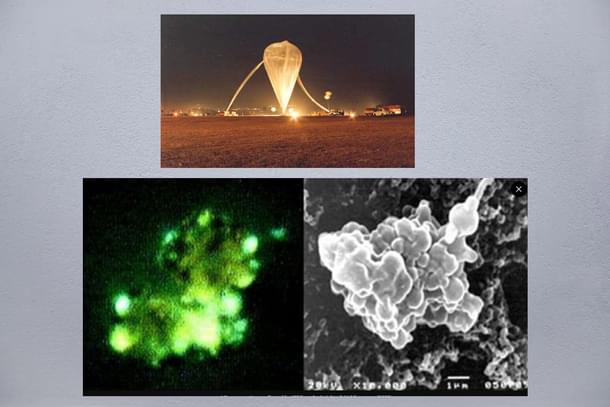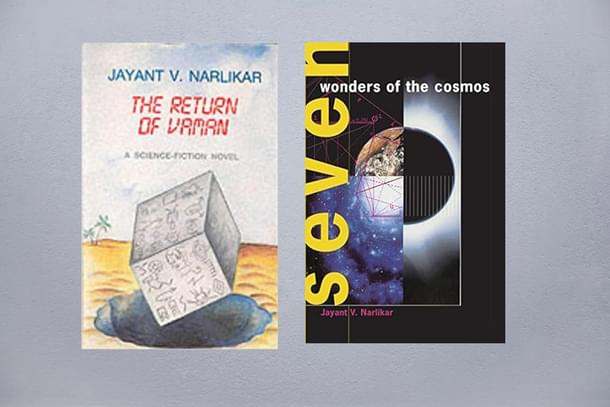Science
What Jayant Vishnu Narlikar Meant To Science And India
Aravindan Neelakandan
May 22, 2025, 06:09 PM | Updated 06:09 PM IST
Save & read from anywhere!
Bookmark stories for easy access on any device or the Swarajya app.


On 20 May, 2025, Jayant Vishnu Narlikar (1938-2025), a luminary of cosmology, transcended into immortality, not in the sense of the soul that he never believed in but as an inspiring memory, leaving an indelible mark on the modern scientific heritage of India.
A visionary astrophysicist, he fearlessly challenged the orthodoxy of the Big Bang theory, aligning with a select team of scientists who dared to reimagine the universe’s origins.
Under the tutelage of his mentor, Fred Hoyle—a brilliant yet unorthodox scientist whose controversial views on evolution and cosmology stirred global debate—Narlikar honed his intellectual rigour. Though part of a respected yet unconventional fringe on the international stage, in India, Narlikar stood as a pillar of mainstream institutional science, his scholarship and leadership illuminating the path for generations of researchers.
Gravity of a Cosmological Confrontation
The timeline is interesting here: in 1915, Albert Einstein had published his famous field equations of general relativity (GR), describing gravity as the curvature of spacetime caused by mass and energy. This would form the bedrock of further cosmological models.
In 1927, the Jesuit astronomer Georges Lemaitre came up with his famous ‘hypothesis of the primeval atom.’ This was based on Einstein’s work. Lemaître also predicted what would be known as Hubble’s Law later.
In his 1927 paper, ‘A Homogeneous Universe of Constant Mass and Growing Radius Accounting for the Radial Velocity of Extragalactic Nebulae’, he proposed that the universe is expanding, and the radial velocities of galaxies, as observed through their redshift, are proportional to their distance from the observer.
Later, Hubble’s 1929 observations of galaxy redshifts and distances, solidified the empirical basis for the law.
Lemaitre's original publication in an obscure journal, combined with later omissions in translation, led to Hubble's name being more widely associated with the law. Nonetheless, this ultimately made Lemaître's theory for the origin of the universe more widely accepted and better suited to the emerging cosmological framework.
However, given its resemblance to the Biblical Genesis—and perhaps also because it was presented by a priest—most scientists were not very favourable towards the theory. A more mathematically elegant, intellectually appealing model called ‘Steady State Model’ was favoured by many of the cosmologists.
So, in 1948, physicist and the face of British science, Fred Hoyle, along with Hermann Bondi and Thomas Gold, proposed the steady-state theory. Here is the universe with no beginning or end, where matter is continuously created to maintain constant density during expansion.
On the other hand, physicists George Gamow and his colleagues proposed that there should be a Cosmic Microwave Background (CMB) as a relic from the scenario proposed by Lemaitre. Fred Hoyle derisively called Lemaitre's origin scenario ‘Big Bang'. The the name stuck to it instead of the ‘primeval atom’, the original name given by Lemaître.
In 1964, along with Fred Hoyle, JV Narlikar, then at Cambridge and a winner of the Tyson Medal for astronomy, developed the Hoyle-Narlikar theory of gravity. At that time Narlikar was just 26.
Then, two physicists, Arno Penzias and Robert Wilson, working with a radio telescope at Bell Labs in 1964, accidentally discovered the cosmic microwave background (CMB) uniform 2.7 K microwave radiation across the sky as predicted by Gamow. This greatly supported the ‘Big Bang’ theory.
The Steady-State theory lost and along with that the Hoyle-Narlikar theory of gravity was ignored as well.

In 1993, the same three physicists, Hoyle, Narlikar and Geoffrey Burbidge, proposed another model which tried to attribute the CMB to thermalised starlight instead of the Big Bang. Called 'Quasi Steady State Cosmology' (QSSC), it too is to date only a mathematically elegant-yet-fringe theory.
Today, the Narlikar-Hoyle legacy in cosmology is more of a historical value. It shows how similar to natural selection, with competing hypotheses, empirical data and observational facts become the selection forces which decide which hypothesis would become the theory and dominate the academic realm.
Testing a Fringe Hypothesis Bears Fruits
Narlikar has said in an interview that while he respects the scientific heritage of India, he considered himself as belonging to a heritage whose line comes from Newton and Galileo rather than Aryabhatta. However, he indeed displayed a guru-shishya like reverence to Hoyle, his mentor. He was even prepared to test one of his guru’s more fringe hypotheses.– panspermia.
In a quest born of audacious curiosity, Narlikar's commitment to exploring the cosmic origins of life found its tangible expression in a series of pioneering balloon experiments. This ambitious undertaking garnered the collaborative might of India's premier scientific agencies.

The initial foray into the ethereal upper reaches of Earth's atmosphere commenced in 1998, with the Indian Space Research Organisation (ISRO) sponsoring the maiden balloon flight. This was followed by a subsequent sampling mission in 2001, during which precious atmospheric contents were meticulously collected across four distinct altitude bands: 19-20 km, 24-28 km, 29-39 km, and 39-41 km.
These invaluable samples were then dispatched for meticulous analysis to leading scientific institutions globally: the Centre for Cellular and Molecular Biology (CCMB) in Hyderabad, and the esteemed laboratories of the University of Sheffield and the Cardiff Centre for Astrobiology.
The initial findings were compelling, revealing a surprising diversity of twelve bacterial and six fungal species thriving in the extreme conditions of the upper atmosphere. Intriguingly, some of these microorganisms exhibited a remarkable resistance to ultraviolet (UV) radiation, a characteristic crucial for survival in the harsh outer space environ.
However, these groundbreaking results were met with understandable scientific skepticism, particularly concerning potential contamination of the cryo-sampler.
Undeterred, and with a steadfast commitment to scientific rigour, ISRO under its Chairman Madhavan Nair, once again stepped forward in 2005 to address these concerns.
This time, the experiment's payload underwent an even more stringent testing regime and a significantly enhanced fabrication process, incorporating a crucial control element: an unopened tube to definitively rule out contamination. Air samples were collected across six refined altitude ranges: 20-24 km, 24-27 km, 27-30 km, 30-35 km, 35-40 km, and 40 km (and above).
The subsequent analysis of these meticulously gathered samples yielded extraordinary discoveries. Scientists isolated 12 distinct bacterial and six fungal colonies. Among these, three entirely novel bacterial species were identified, their nomenclature paying homage to significant figures in Narlikar's intellectual landscape:
--Janibacter hoylei, a profound tribute to his revered mentor, Fred Hoyle.
--Bacillus isronensis, acknowledging the vital support and partnership of ISRO.
--Bacillus aryabhatai, a respectful nod to the ancient Indian mathematical and astronomical genius Aryabhatta, whose legacy Narlikar deeply respected within the broader context of India’s scientific heritage.
As might be anticipated for species capable of enduring the rigours of the upper-atmosphere, all three newly identified bacterial strains demonstrated a remarkable resilience to ultraviolet (UV) radiation. This striking characteristic was notably absent or significantly diminished in their closest terrestrial phylogenetic relatives.
For Narlikar, these robust findings dramatically amplified the tantalising prospect of viable life—perhaps in the form of spores—traversing the vast, UV-laden expanse of interplanetary space—‘panspermia.’ He wrote:
Thus we can say with some measure of confidence that these species were picked up in the stratosphere. The possibility of routine meteorite exchanges between the Earth and Mars carrying microorganisms is not ruled out. The ability of spores to survive interplanetary transfer has been seriously considered. The greater UV resistance found in the three new species suggests that they may have passed some time at least in the upper atmosphere (above 24 km) where the UV flux is much more intense than on the ground. Thus in the 'survival of the fittest', only mutants which can withstand the UV flux at high altitudes would remain.Stratosphere microbes might hold clues to life on earth, Nature (India), 25 March 2009.
Even working with ideas dismissed as fringe science, Narlikar used rigorous experiments to challenge convention and prove the power of relentless inquiry. His work, though springing from the not-so-mainstream panspermia hypothesis, has unearthed discoveries that reverberate far beyond its initial scope.
The discovery of the three new UV tolerant species, was not merely an indirect nod to panspermia's potential, it was also a profound contribution that enriches the fields of microbiology, astrobiology, and environmental science.
Institution Builder and Science Populariser
Narlikar was also an institution builder.
His role as the founding director of the Inter-University Centre for Astronomy and Astrophysics (IUCAA) in Pune is a testimony to this fact.
Before IUCAA, Narlikar led the Theoretical Astrophysics Group at TIFR (1972-1989). Under his direction, it not only grew significantly but also achieved global recognition, paving the way for his later institution-building efforts.
IUCCA also undertook an extensive science popularising initiative – called SciPop.
Narlikar loved popularising science. He wrote science fiction both in Marathi and in English. His first sci-fi short story, 'Krishna Bibar' (Black hole) was in Marathi and written in 1974. His short story, 'The Rare Idol of Ganesha', was originally published in Science Today in the early ‘80s.
It received a lot of admiration from the readers; so much so that in another story in the same magazine written by another author, a character gets its idea from reading the stories of Narlikar.
In sci-fi, Narlikar comes in the tradition of Jules Verne. He abhored pseudoscience even in sci-fi. In ‘The Rare Idol of Ganesha’ the core idea he used came from his early theoretical challenger, George Gamow.
In the explanatory note added to his story, Narlikar writes:
... if we are dealing with macroscopic objects like the idol of Ganesha, we will find that its mirror counterpart can exist in nature and the story describes how one can be transformed into the other. One uses the idea of a Mobius strip which effectively transforms a flat (two dimensional) figure into its mirror counterpart. Can the same be done in higher dimensions? In a popular science book the scientist George Gamow argued that this could happen if the space in the universe had a twist! A left shoe sent round such a space would come back as a right shoe. The idea is intriguing and there are extensions of Einstein’s general relativity in which swarms of coherently spinning particles can produce twists in space. The story tells the consequences of having a machine that produces such a twist in a limited region.

His first sci-fi novel, The Message from Aristarchus (1985) was based on the SETI programme.
Later in 1988-89, he also wrote ‘The Return of Vaman’ - this was first written in Marathi (Vaman Parat Na Ala).
His third novel, Virus, was inspired by the Giant Metrewave Radio Telescope (GMRT) which was under construction near Pune at the time.
In all his science-fiction, one can find a strand depicting a clash between a dull, lazy and power-obsessed bureaucracy and those who are really interested in science.
Again, this contradicts with his Nehruvian affinity.

A mind steeped in scientific rigour, Narlikar faced attacks from some traditionalists and some quarters of certain political dispensations, for his forthright views on Vedic Mathematics and astrology. Yet, his stance was never one of contempt for Indian heritage.
In his insightful work, The Scientific Edge, he powerfully advocated for the same clarity and intellectual prowess in science as exemplified by Adi Shankaracharya in philosophical discourse.
Adi-Shankara (the original Shankaracharya) of the ninth century was such a professional so far as his mission of propagating the Vedic religion was concerned. To this end, he engaged in philosophical disputations with his opponents, who were largely influenced by the then-prevalent Buddhist philosophy; he moved all over the Indian subcontinent spreading his message and is today credited with the revival of the Hindu religion. His approach was not that of a fanatic or a zealot; rather he followed a thoroughly professional path that involved discussing and arguing with his opponents until he could defeat them in disputations and convince them of his point of view.
At the same time he came out strong on Vedic astrology which he claimed was an oxymoron:
In fact, authentic records tell us more about Vedic astronomy, which involved the observations of stars and constellations vis-à-vis the Sun and the Moon and their use for time keeping and calendar making. There has been controversy here too, with some scholars like David Pingree who claim that all ancient Indian astronomy was essentially borrowed from the West. Other scholars deny this assertion and maintain that Indian astronomy from the Vedanga Jyotisha to the golden age—from Aryabhata I (fifth century) to Bhaskara II (twelfth century)—developed indigenously with considerable originality. But all these claims and counterclaims are about astronomy and not astrology.
With a gentle demeanour but an unyielding stance against what he deemed pseudo-science, Narlikar embodied the positive spirit and values of Nehruvian legacy. While he occasionally pondered civilisational factors for the perceived lag in scientific and technological progress—claims open to vigorous debate, validation, or refutation—his profound affection for India and its society was undeniable.
He dedicated his life to imbuing Indian society with a scientific outlook, unequivocally joining the esteemed lineage of individuals who inspire national pride.
While personally I might incline towards George Sudarshan as a more ideal exemplar for an Indian physicist, such partiality must not eclipse the profound importance of Jayant Narlikar to India's scientific legacy.
His relevance today is perhaps more poignant than ever. In an era witnessing the flourishing of numerous Indian Knowledge Systems (IKS) courses, there is an understandable, yet possibly perilous, tendency for over-enthusiasm and patriotism to uncritically embrace anything labelled 'Indic' or 'Vedic' as genuine. Such an uncritical approach risks inviting not merely individual or institutional ridicule, but a broader devaluation of our entire civilisational discourse.
It is precisely here that Narlikar's unwavering commitment to rigorous scientific methodology offers an invaluable safeguard, a potent antidote to these insidious pitfalls.
Narlikar himself experienced the quiet relegation of his elegantly crafted gravitational theory to obscurity, perhaps even to a mere historical footnote in the grand narrative of modern cosmology. Yet, he bore this with remarkable equanimity, devoid of bitterness.
As evidenced, he could even gracefully incorporate ideas from the very challenger of his own work, Gamow. While he remained steadfastly critical of fringe scientific claims within India, it is also a profound irony that, globally, he himself navigated the scientific fringe. Nevertheless, he unequivocally demonstrated that rigorous experimentation, when applied even to unconventional hypotheses—whether validating or falsifying them—invariably expands the frontiers of our knowledge.
Yet, Narlikar, much like Carl Sagan, bequeathed to us a powerful ‘baloney detection kit.’ His enduring dictum can be summarised as, ‘test all claims, mainstream or fringe, with scientific rigour and society will stand to benefit,’ and it stands as a vital law and a luminous legacy that IKS courses would do well to embrace and embed at their very core.





